Okay so I am trying to apply a double buffering technique in an emulated environment (DosBox) while using the IDE Turbo C++ 3.0 I am running windows 7 64bit(Not sure if that matters) and I have no clue how to properly execute the buffering routine in this environment.
The main problem I am having is that I can't seem to execute the following assignment statement:
double_buffer = (byte_t far*)farmalloc((unsigned long)320*200);
(Note that 320 and 200 are the screen sizes)... I just get NULL for the assignment.
I tried changing the default RAM usage of the DosBox to 32 instead of 16, but that didn't do anything. I'm not sure if it's the emulator or there is something wrong with the code for Turbo C. (Note that it complies just fine).
Here is a sample program I found online:
#include <stdio.h>
#include <stdlib.h>
#include <conio.h>
#include <dos.h>
#include <string.h>
#include <alloc.h>
typedef unsigned char byte_t;
byte_t far* video_buffer = (byte_t far*)0xA0000000;
void vid_mode(byte_t mode){
union REGS regs;
regs.h.ah = 0;
regs.h.al = mode;
int86(0x10,®s,®s);
}
void blit(byte_t far* what){
_fmemcpy(video_buffer,what,320*200);
}
int main(){
int x,y;
byte_t far* double_buffer;
double_buffer = (byte_t far*)farmalloc((unsigned long)320*200);
if(double_buffer == NULL){
printf("sorry, not enough memory.\n");
return 1;
}
_fmemset(double_buffer,0,(unsigned long)320*200);
vid_mode(0x13);
while(!kbhit()){
x = rand()%320;
y = rand()%200;
double_buffer[y * 320 + x] = (byte_t)(rand()%256);
blit(double_buffer);
}
vid_mode(0x03);
farfree(double_buffer);
return 0;
}
